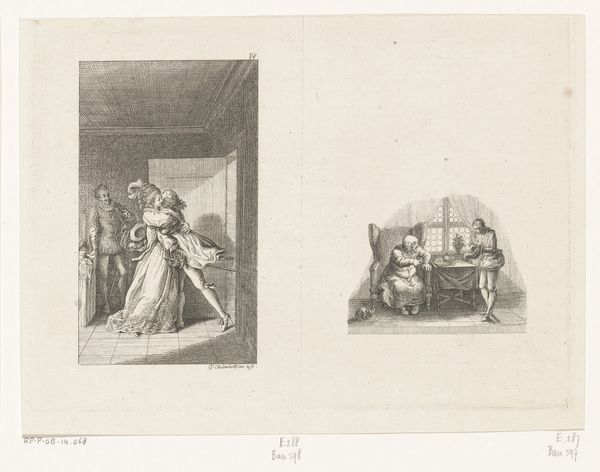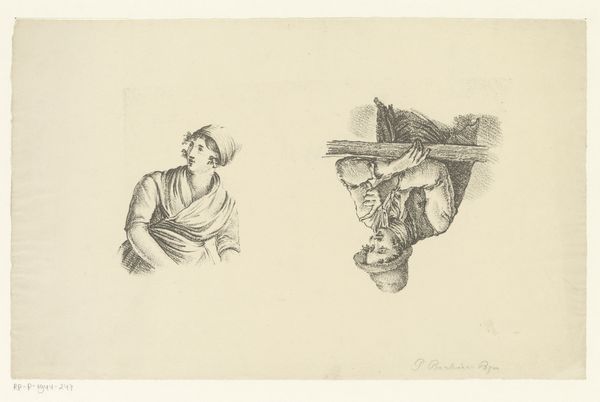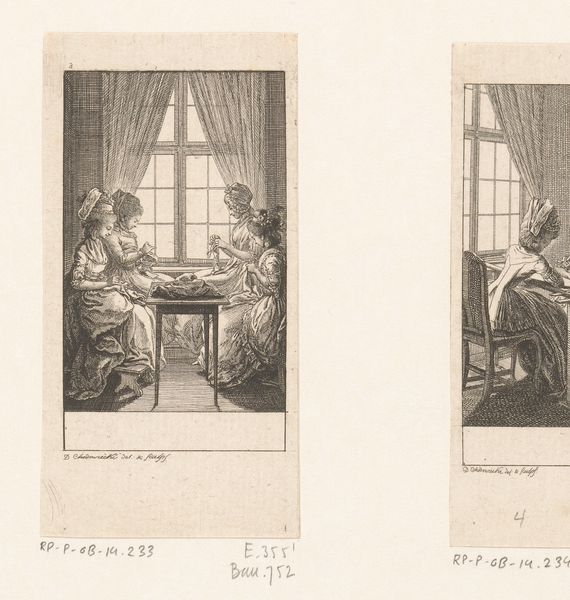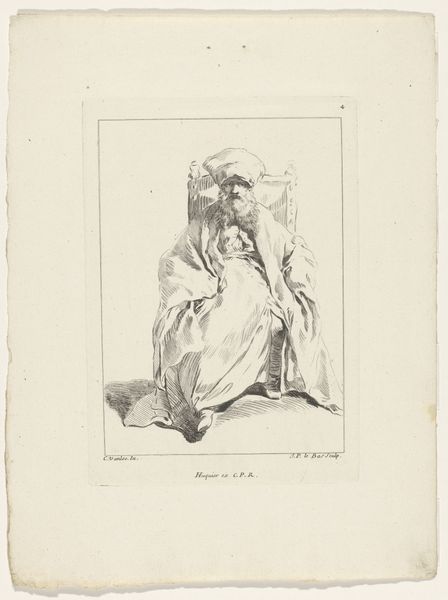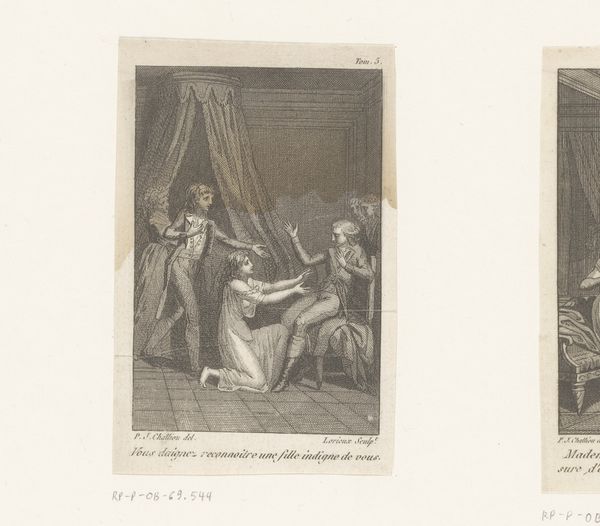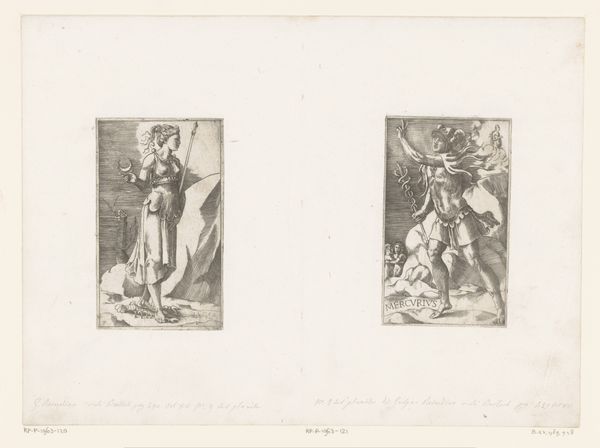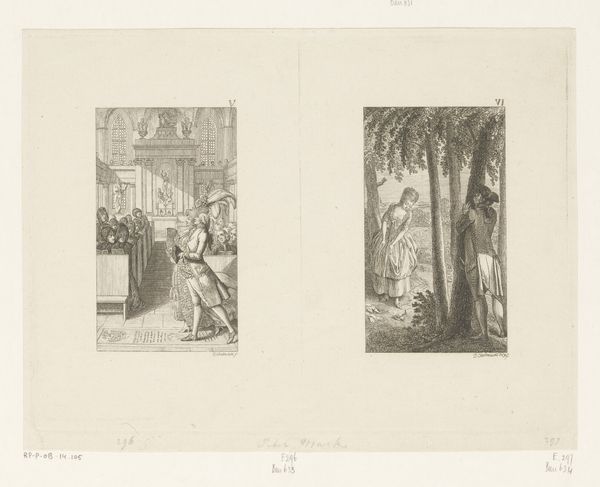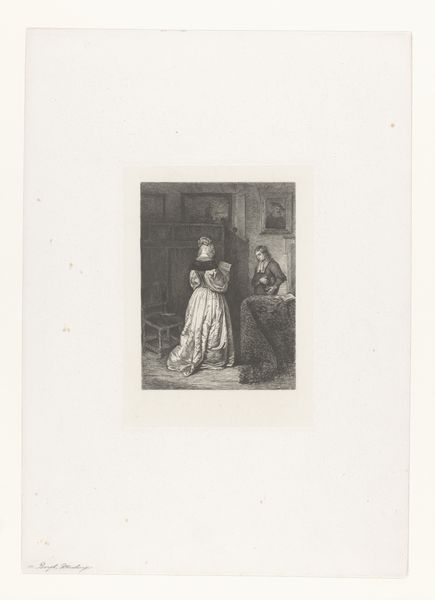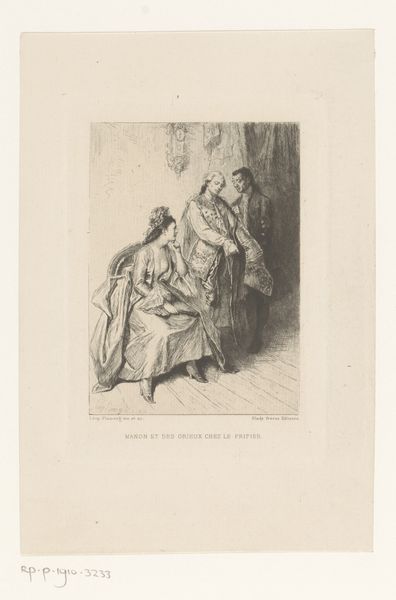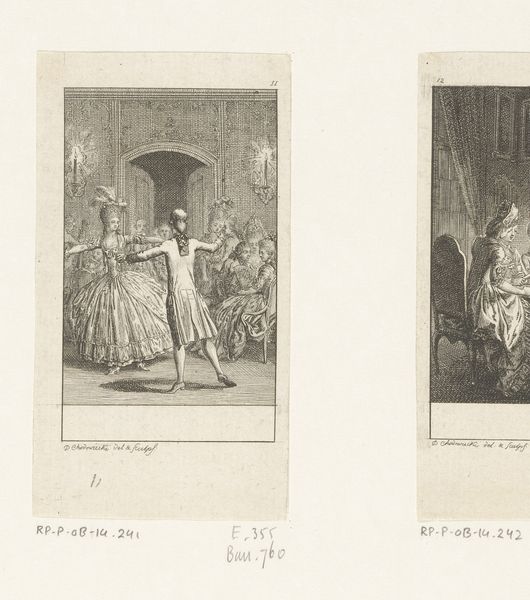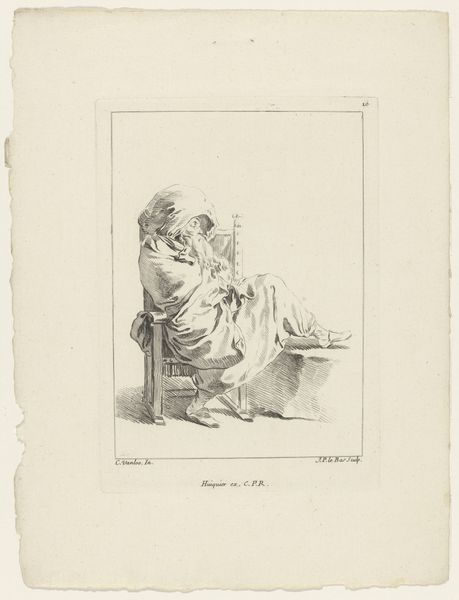
Boerin uit Buiksloot en Hollandse boerin met klein kind op schoot 1728
0:00
0:00
print, engraving
#
mother
#
baroque
#
dutch-golden-age
# print
#
old engraving style
#
genre-painting
#
engraving
Dimensions: height 115 mm, width 68 mm, height 115 mm, width 70 mm
Copyright: Rijks Museum: Open Domain
These two prints, made by Bernard Picart around the turn of the 18th century, offer a fascinating glimpse into Dutch rural life through the skilled technique of etching. Etching, a printmaking process using acid to bite lines into a metal plate, allowed Picart to capture intricate details and textures. Look closely, and you'll see the rough fabrics of the women's clothing and the delicate lines defining their faces. But beyond the artistry, consider the social context. These images reflect a growing interest in the lives of ordinary people, a trend fueled by the rise of a merchant class with money to spend on art. These prints are commodities, and they invite viewers to contemplate the labor and lives of those who worked the land. There’s a tension here: the prints aestheticize labor while also placing it at a distance. By focusing on the materials and the making, we can understand not only the artistic skill involved but also the broader cultural values at play.
Comments
No comments
Be the first to comment and join the conversation on the ultimate creative platform.

